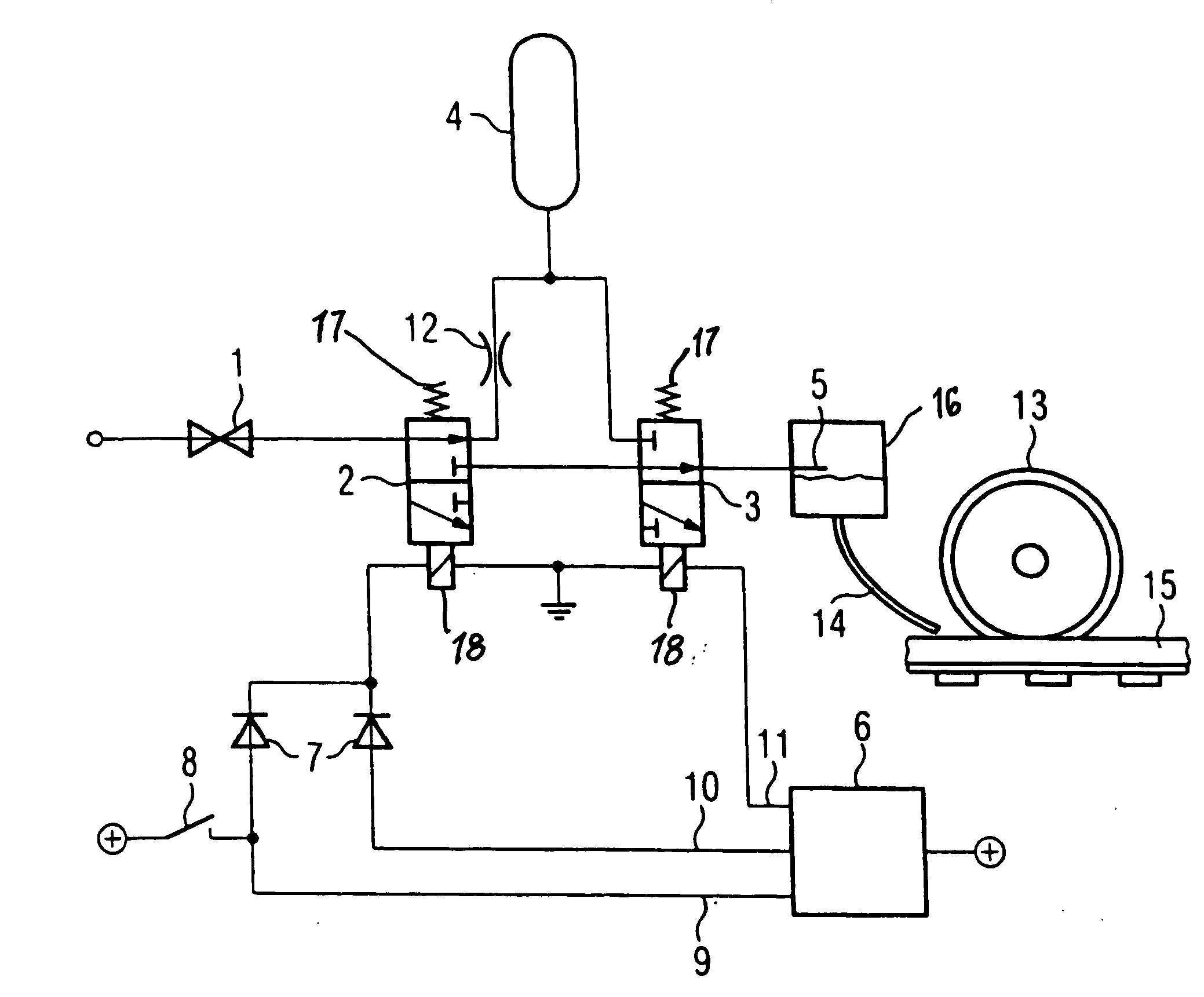Sanding Device for Rail Vehicles
a technology for rail vehicles and sanding devices, which is applied in the direction of locomotives, railway braking systems, piping arrangements, etc., can solve the problems of no optimal effect, no full effect of operating disturbances, etc., and achieve the effect of increasing the coefficient of adhesion between the wheels and the rails within a short time and improving the coefficient of adhesion
- Summary
- Abstract
- Description
- Claims
- Application Information
AI Technical Summary
Benefits of technology
Problems solved by technology
Method used
Image
Examples
Embodiment Construction
[0014]A sanding device according to the present disclosure includes a pressure reducing valve 1 to which the pressure from a pneumatic braking system of a rail vehicle is applied. Also included is a first pneumatic valve 2 in the form, for example, of a 3 / 2-way valve, a second pneumatic valve 3 in the form, for example, of a 3 / 2-way valve, a pressure container 4, a sanding nozzle 5 which is arranged in a sanding container 16, and a brake control device 6.
[0015]The output of the pressure reducing valve I is shown, for example, in FIG. 1, connected with an input of the first 3 / 2-way valve 2. One of two outputs of the first 3 / 2-way valve 2 is connected by way of a throttle 12 with a connection of the pressure container 4. This connection of the pressure container 4 is connected with one of two inputs of the second 3 / 2-way valve 3. The other of the two outputs of the first 3 / 2-way valve 2 is shown connected with the other of the two inputs of the second 3 / 2-way valve 3. An output of the...
PUM
 Login to View More
Login to View More Abstract
Description
Claims
Application Information
 Login to View More
Login to View More - R&D
- Intellectual Property
- Life Sciences
- Materials
- Tech Scout
- Unparalleled Data Quality
- Higher Quality Content
- 60% Fewer Hallucinations
Browse by: Latest US Patents, China's latest patents, Technical Efficacy Thesaurus, Application Domain, Technology Topic, Popular Technical Reports.
© 2025 PatSnap. All rights reserved.Legal|Privacy policy|Modern Slavery Act Transparency Statement|Sitemap|About US| Contact US: help@patsnap.com


